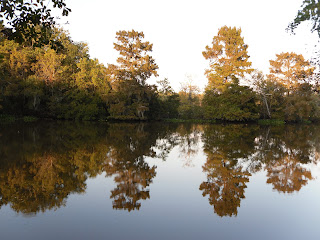This is part of the National Park system. It has a wonderful visitor's center with a gift shop, educational museum, and movie.
Founded in 1720, the mission was named for Saint Joseph and the Marqués de San Miguel de Aguayo, the governor of the Province of Coahuila and Texas at the time. It was built on the banks of the San Antonio river several miles to the south of the earlier mission, San Antonio de Valero (the Alamo). Its founder was the famed Father Antonio Margil de Jesús, a very prominent Franciscan missionary in early Texas. Mission San Jose is an active parish. Visitors are welcome to attend mass on Sundays.
We didn't go inside when we were there because Mass was happening. But we did peek our heads in the sanctuary and it was gorgeous but we couldn't take any pictures
San José, as it became known, was the largest of the missions in the area. At its height, the community contained about 350 Indian neophytes, sustained by extensive fields and herds of livestock. Viewed as the model among the Texas missions, San José gained a reputation as a major social and cultural center. It became known as the "Queen of the Missions." Its imposing complex of stone walls, bastions, granary, and magnificent church was completed by 1782.
Our tour guide was wonderful. Her grandparents attend church here and she is a direct descendant from the Indian's that first called this mission home.
This is 'The Rose Window', which is located on the south wall of the church sacristy. The window sculpted ca. 1775, has been the object of both legend and admiration. It is considered one of the finest examples of baroque architecture in North America. The legend is that the creator Juan Huizar named it for his betrothed Rosa. (http://www.nps.gov/saan/historyculture/sanjosehistory1.htm)



















































